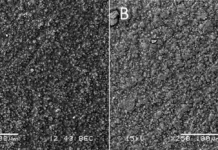By Dianna Brodine, managing editor, UV+EB Technology
To gain insight into how curing technologies can impact lightweighting goals in the automotive industry, UV+EB Technology spoke with Rebecca Lonczak, marketing manager, Keyland Polymer, and Mary Ellen Rosenberger, founder, BaySpring Solutions LLC.
Why is lightweighting a concern for the automotive industry?
Lonczak: Increasing government and environmental regulations are driving automakers to design and manufacture vehicles with greater fuel efficiency and handling, CO2 reduction and resource efficiency. The use of plastics, carbon fiber, composites and other lightweighting materials in automobiles will more than double from 2020 to 2040 (Center for Automotive Research; CAR Research 2019) This demand is not only driven by the need to meet internal combustion engine mileage standards but also the growth of electric vehicles. The switch to lightweight materials is a market opportunity for the coating industry, bringing new finishing, pretreatment and application technologies.
Rosenberger: Lightweighting is one of the legs of the stool that allows the improvement of miles per gallon (mpg). It also allows more of the total vehicle weight to be given to the battery, which will be critical for electric autonomous vehicles. But, since 2005, even with the ups and downs of politics and legislative efforts, there’s been a steady research and development program in automotive to improve mpg rating. Much of that is dependent on substrate, and now – with the added requirements of electric and autonomous vehicles – the industry is focused on lighter substrates, such as aluminum, plastics and lightweight steel.
Where are the opportunities in automotive applications for lightweighting?
Lonczak: Applications for carbon fiber and other types of lightweighting materials are structural, functional and decorative. Any metal element that can be replaced with a lightweight material without compromising the integrity and/or regulatory requirement of that element is a potential candidate for lightweighting substitution, such as wheels, body panels, internal support structures, underbody elements and drivetrain components. It is important to bear in mind that economic and cost factors have to be met – typically, on a pound-to-pound basis, lightweighting materials are more expensive than steel and aluminum.
Lonczak, continued: Plastic, carbon fiber and composites are lightweight materials and often are described as “heat sensitive” materials. Each of these materials has a heat threshold or a deformation temperature. When this temperature is exceeded, the material may warp, deform, outgas, or manifest a response to heat that compromises the integrity of the material. UV-curable powder coating with plasma pretreatment is a low-termperature finishing system well-suited for lightweight materials. The low-temperature melt flow and instant UV cure enables the use of UV-curable powder coatings on materials, products and component parts that normally could not be powder coated.
Rosenberger: There are two areas of UV technology that have been critical to automotive in the last several research cycles. The first is 3D printing, which has improved vehicle development time. 3D-printed prototypes allow rapid iterations of vehicle components to test them for competency and prove out the design. And, there are certain components that cannot be made in a mold because they’re too intricate. 3D printing is capable of creating those high-detail components, and there’s room for growth in this area. Where it has not made strides is in the material development, and that is something automotive OEMs have been working on. Even though the industry can make 3D parts, those materials have not yet been proven out for durability. The long-term goal is to develop the actual materials that will be used in mass production, and that’s still a major part of ongoing research.
Rosenberger, continued: The second area where we still can make strides is in highly durable coatings. Curing technologies have use in a lot of different automotive products (outlined in the UV automotive map found at www.radtech.org/industries/automotive). However, even though UV has small uses on B pillars, lenses for lights, etc., the holy grail will be the ability to light cure the exterior A Class coatings, and that’s something we continue to do research in.





